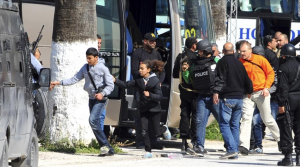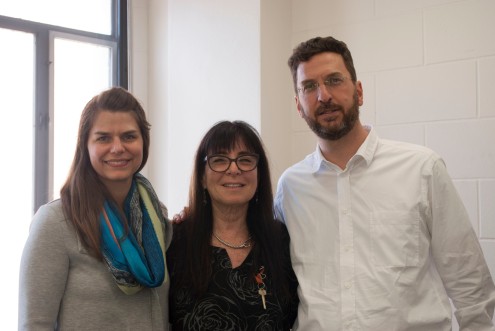This month, Jodi Elowitz shares three selections that explore the obsession with Adolf Eichmann in film.
 As we watch neo-Nazis and white supremacists on our TV’s and in our news feeds it might be a good time to reacquaint ourselves with the original Nazis and just what happens when we remain silent. On Netflix, we can watch The Eichmann Show (2015), which portrays the decisions made towards filming the 1961 trial of Adolf Eichmann, head of Jewish Affairs, who was responsible for deporting the Jews of Europe to their deaths. In the aftermath of liberation, Eichmann fled Europe and went into hiding in Argentina, until he was kidnapped by Mossad agents and brought to trial in Israel. The Eichmann Show, produced by BBC, stars Martin Freeman as producer, Milton Fruchtman, and Anthony LaPaglia as director, Leo Hurwitz. Both excellent actors have little acting to do since they take a lesser role to the integrated footage from the actual trial. The screen alternates from black and white to color as we move from the actual footage to the representational courtroom. Mainly focused on the arguments between Hurwitz and Fruchtman on the purpose of the filming, we are shown the obsessive nature of both men on a mission. Hurwitz is determined that the camera and the magic of film will compel Eichmann to show us his soul and that we will see a moment of recognition and regret for his crimes. Fruchtman is less concerned with finding Eichmann’s humanity as he is televising the “trial of the century.” He is more focused on the emotional impact of the recounting of the horrors of the Holocaust by the survivors. The trial was important for both playing a role in our understanding of the Holocaust, and because it was the first televised world news event, which would lead to other televised “trials of the century.” The trial is important because it helped us understand that those who died did not go like sheep to the slaughter, and it helped lift the stigma attached to survivors (especially in Israel), as the Nazi crimes were explained in full detail by those who experienced it firsthand.
As we watch neo-Nazis and white supremacists on our TV’s and in our news feeds it might be a good time to reacquaint ourselves with the original Nazis and just what happens when we remain silent. On Netflix, we can watch The Eichmann Show (2015), which portrays the decisions made towards filming the 1961 trial of Adolf Eichmann, head of Jewish Affairs, who was responsible for deporting the Jews of Europe to their deaths. In the aftermath of liberation, Eichmann fled Europe and went into hiding in Argentina, until he was kidnapped by Mossad agents and brought to trial in Israel. The Eichmann Show, produced by BBC, stars Martin Freeman as producer, Milton Fruchtman, and Anthony LaPaglia as director, Leo Hurwitz. Both excellent actors have little acting to do since they take a lesser role to the integrated footage from the actual trial. The screen alternates from black and white to color as we move from the actual footage to the representational courtroom. Mainly focused on the arguments between Hurwitz and Fruchtman on the purpose of the filming, we are shown the obsessive nature of both men on a mission. Hurwitz is determined that the camera and the magic of film will compel Eichmann to show us his soul and that we will see a moment of recognition and regret for his crimes. Fruchtman is less concerned with finding Eichmann’s humanity as he is televising the “trial of the century.” He is more focused on the emotional impact of the recounting of the horrors of the Holocaust by the survivors. The trial was important for both playing a role in our understanding of the Holocaust, and because it was the first televised world news event, which would lead to other televised “trials of the century.” The trial is important because it helped us understand that those who died did not go like sheep to the slaughter, and it helped lift the stigma attached to survivors (especially in Israel), as the Nazi crimes were explained in full detail by those who experienced it firsthand.






